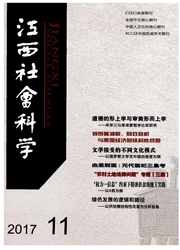

 中文摘要:
中文摘要:
运用变异系数、泰尔指数和计量经济模型分析1990—2012年中国人均粮食占有量时空演变及其驱动因素。结果表明:人均粮食占有量呈先波动上升后波动下降再持续上升变化特征;人均粮食占有量空间差异呈现"平缓—快速"的阶段性特征;黑龙江、内蒙古、吉林、河南、宁夏、新疆、甘肃、安徽人均粮食占有量增幅较大,浙江、北京、广东、上海和福建人均粮食占有量降幅较大;严重缺粮区在京津和东南沿海地区呈分散分布,一般缺粮区呈零散分布,基本自给区在西部呈聚集分布,一般余粮区在中部呈聚集分布,重要余粮区在东北呈聚集分布;乡村人口人均耕地面积、农业劳动力人数、亩均农业机械总动力、亩均化肥施用量、农田水利化程度、偏好种植、复种指数和取消农业税对人均粮食占有量起到正向作用,自然灾害程度和人均GDP对人均粮食占有量起到负向作用。
 英文摘要:
英文摘要:
This paper analyzed the spatio-temporal evolution and driving forces of per capita grain possession in China from 1990 to 2012 by variation coefficient and theil index.The results as follows: the change characteristics of per capita grain possession was firstly fluctuate rising,then fluctuate declining, then continuously rising;"slow- fast"staged development was the characteristics of spatial difference change of per capita grain possession; the rising rate of per capita grain in Heilongjiang, Neimenggu, Jilin, Henan, Ningxia, Xinjiang, Gansu and Anhui were larger, while the decling rate in Zhejiang, Beijing, Guangdong, Shanghai and Fujian were larger; the serious food shortage region gathered in Beijing, Tianjin and the the southeast coastal region,the food shortage region scattered; bascial self-sufficient region gathered in west,general surplus region gathered in central regions,important surplus region gathered in northeast;the positive effect on per capita grain possession were the rural population per capita cultivated, the population of the agricultural labor workers, per mu the power of agricultural machinery, per mu the amount of fertilizer, the degree of irrigation、perference to plant grain、multiple crop index and abolition of agricultural tax, the negative effect were natural disaster degree and per GDP.
 同期刊论文项目
同期刊论文项目
 同项目期刊论文
同项目期刊论文
 期刊信息
期刊信息
